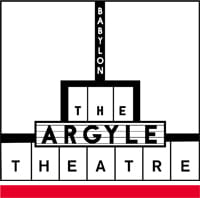
OUR SPONSOR
Greater Patchogue coverage is funded in part by New Village at Patchogue, open-concept rental residences with sleek contemporary design. Click here
for a tour.
Sean Quinn explained to some of his fellow students Monday at St. Joseph’s College that one of his biggest concerns is how he’s constantly forgetting things.
That’s just part of living with autism, the junior from Huntington explained.
“Nothing causes me to forget; that’s just how my brain is wired,” he said from a table at the Patchogue campus’s Simulation Day events.
“Like today I forgot to bring one of my assignments,” Quinn continued, “which is finished. But if I turned around to drive back to Huntington I would have been late for this.
“So I’m hoping my professor doesn’t yell at me.”
Simulation Day — this is the second at St. Joseph’s — is organized and run by the Individual Needs Network, a new club on campus that encourages unity among students by highlighting and celebrating their differences, as well as through education and advocacy.
Quinn manned one of six tables at Monday’s simulation circuit at the college, during which participating students got a chance to experience what everyday life might be like for people with different needs and abilities.
To demonstrate the type of overstimulation a person with autism might experience while trying to concentrate, Quinn arranged it so one participating student would pretend to take a test, while another read aloud within inches of his ear.
“That makes it not so easy to do your exam, right?” he said at the end of the exercise.
Noelle Eichenlaub, the club’s chair of communications, explained the idea is to educate people through a real experience, so that they can take the information they learned and use it to “inform their daily life.”
“It’s really about being a better person,” she said.
Eichenlaub, a junior, manned the station designed to simulate blindness, because the student advocate who organized the station suddenly couldn’t make it due to health issues.
At that table, Eichenlaub handed dozens of socks to participating students and told them to match the socks into pairs — with their eyes closed.
When one group was told to open their eyes, only one student found that he had successfully matched a pair of socks.
“So you can see how something we take for granted, like matching socks, can be difficult,” she explained, adding that the student had planned to bring a device that helps her to match colors.
Eichenlaub then gave the students advice on how to best help someone who is visually impaired.
“Above all,” she said, “you need to have patience.”
Other simulations Monday (there was also an evening event planned) included speech impairment, dysgraphia, Tourette’s syndrome, dementia and deafness/hard of hearing.
For Quinn, who recently transferred from Suffolk County Community College, he said he’s always had to deal with some instructors who might not be so understanding of his everyday struggles.
They need to better understand that forgetting an assignment or being unable to successfully complete a task in time often has nothing to do with not taking the time to study or otherwise be properly prepared.
“People who have autism have every right to an education,” Quinn said as the day’s sessions were wrapping up.
“I wouldn’t be paying for an expensive education if I didn’t want to work hard.”
Top photo: Amanda Clareen, a sophomore from Islip, and Fallon Martensen, a freshman from East Islip, struggle to find matching socks with their eyes closed at Monday’s blindness simulation table.

































